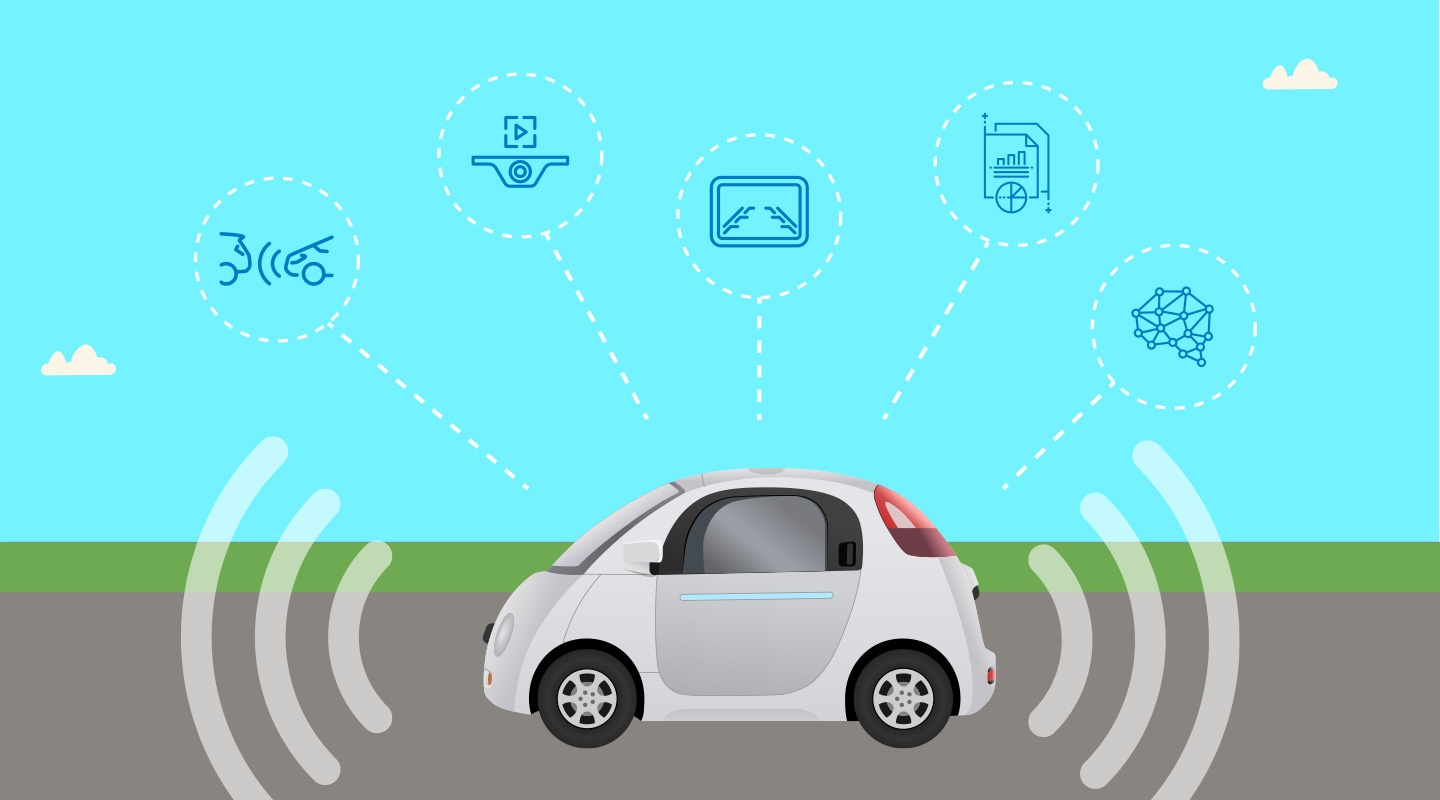Part 2 in a Series
With road testing of driverless vehicles now underway across North America, and more pilots on the horizon, it’s no wonder property and casualty insurers and industry experts are increasingly discussing the changing risk landscape.
After beginning this blog series with an overview of what constitutes an autonomous vehicle (AV), now we’ll review the primary AV technologies, the differentiators between how current market entrants apply these technologies, and how roadways factor into the driverless picture. Each of these shapes risk in the emerging driverless world.
The technologies that support autonomous vehicles
As we noted previously, truly driverless vehicles exhibit either Level 4 or Level 5 autonomy. Attaining either level requires combining multiple technologies that fall under five primary categories. Let’s take a look at each.
Control Systems for steering, acceleration, and braking. These sensor and camera-enabled systems are available on Level 1-3 vehicles today.
Computer Vision combines artificial intelligence (AI), video, and digital images for enabling computers to interpret, understand, and react to visual cues. When applied to vehicles, computer vision includes cameras and ultrasonic sensors, along with radar, lidar (Light Detection And Ranging), or both. Simply put, lidar is a laser-enabled technology for determining the range, angle, and velocity of objects, while radar uses radio waves to accomplish the same jobs. Current Level 2 and Level 3 vehicles use computer vision.
Mathematics & Statistics include sensor fusion, localization, and trajectory generation for producing the highly accurate models of a vehicle’s environment that are necessary for smooth, continuous forward motion. In addition to the sensors and cameras previously discussed, location information is supplied by adding technologies such as GPS and/or cellular mapping.
Computer Science, which provides trajectory and behavior planning. Trajectory planning is a robotics term for determining path and velocity. Behavior planning involves establishing the actions or maneuvers to accomplish a driving goal under various situations.
Artificial Intelligence for real-time traffic, obstacle, and signal recognition along with behavior planning and situational awareness. In short, AI combines all of the above inputs, technologies, and analytical disciplines, while also adding learning capabilities to approximate, and even surpass human decision-making abilities.
Primary approaches to the driverless goal
Although all driverless vehicles incorporate individual technologies from each of the foregoing categories, how manufacturers combine and offer these technologies affects the types of risks you’ll have the opportunity to cover.
Most notably, an ongoing debate in the AV industry is lidar or no-lidar. Today, the predominant view holds that lidar is the cornerstone for appropriately robust computer vision. However, some argue that lidar is unnecessarily expensive as a combination of cameras, radar, and software applications are sufficient.
Whether forgoing lidar will prove more or less risky under real-world driving conditions remains an open question that insurers should monitor and evaluate when developing underwriting models.
In practical terms, the lidar debate is shaping the four distinct approaches AV suppliers are taking to differentiate themselves in the market.
- Manufactured vehicles with lidar. Of the companies building AVs from the ground up, most are using radar and lidar. Aurora Innovation, Ford, Cruise (GM), Voyage, and Waymo are notable manufacturers following this model.
- Manufactured vehicles without radar. Currently, the lone vehicle manufacturer pursuing the no-lidar approach is Tesla.
- Aftermarket kits with lidar. For the DIY crowd, startups are emerging with kits to retrofit your existing vehicle. AutoX and TONY (Perrone Robotics) are prominent developers.
- Aftermarket kits without lidar. Comma.ai and Ghost Locomotion are the best-known kit players making the no-lidar bet.
Environmental impacts
Roadway environments also play a critical role in the development of driverless options and the shape of risk. Older North American cities such as Boston or Toronto, with narrow winding streets and complex signage, are considerably more challenging for an AV to navigate than younger metros like Houston, with predictable roadway grids. Unsurprisingly, most rural highways are also lower-barrier settings.
One solution to this challenge is geofencing. In short, this means restricting vehicles to a certain area, such as suburban neighborhoods with low speed limits, or prohibiting them from a specific area, such as particularly congested urban areas. Driverless options that require geofencing are considered to have Level 4 autonomy.
Another solution is for municipalities to roll-out AV-friendly infrastructure and/or regulations. This can include beacons for location, road-way status, and traffic conditions ahead, specialized lane markings for easy identification of roadways and designated lanes or routes. The goal of this is to reduce the clutter and unpredictability of city streets; making them easier for an AV to successfully navigate. The fewer variables that need to be managed, the better for autonomy.
Although some AV manufacturers are limiting their products to Level 4, such as kit maker Ghost’s targeting highway driving, companies developing complete vehicles are working to solve the problem of operating at Level 5 autonomy. This means traveling anywhere and anticipating any eventuality.
Next up: Adoption trends and coverage opportunities
Given all of the various technologies, driverless approaches, and environmental considerations, you’re likely wondering about the coverage opportunities and challenges insurers are facing in the driverless market.
We’ll discuss each of these topics in our next blog, Full Speed Ahead: Opportunities and Challenges in a Driverless Paradigm.
To review concepts in our previous blog, read Full Speed Ahead: The State of Autonomous Vehicles and What Insurers Need to Know.




